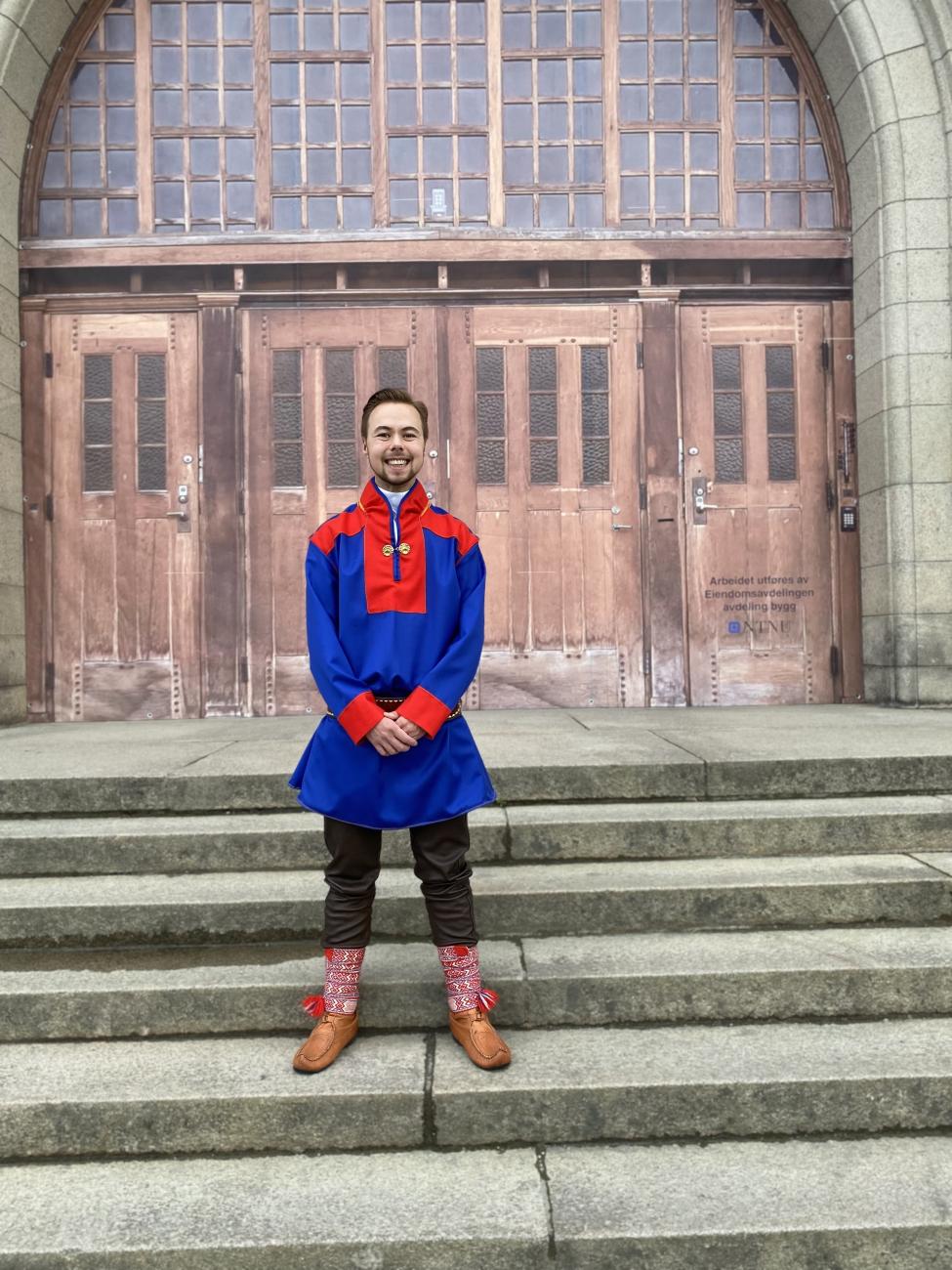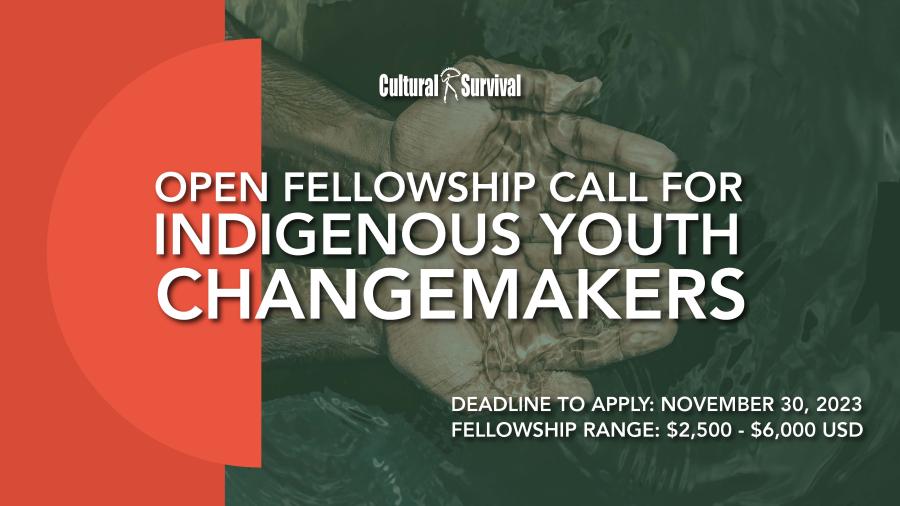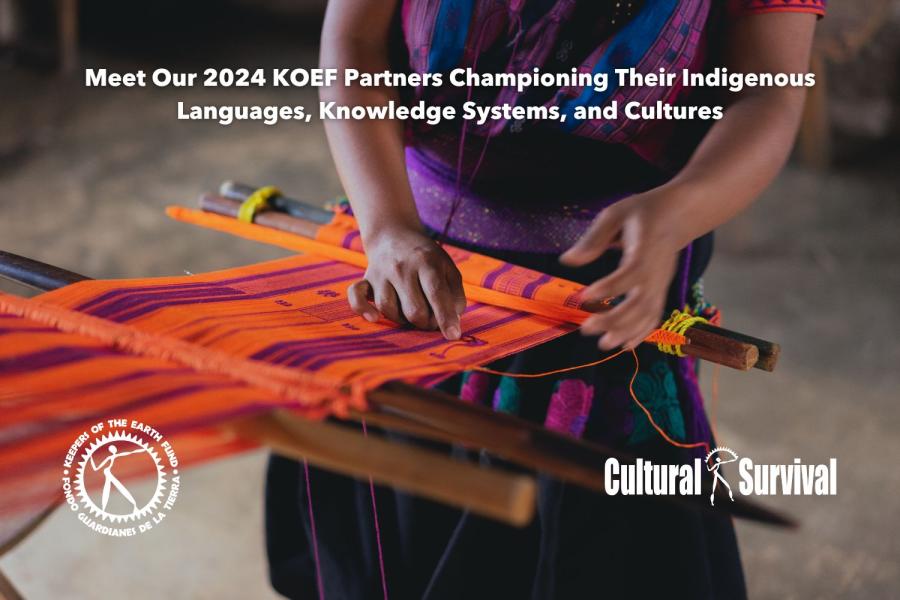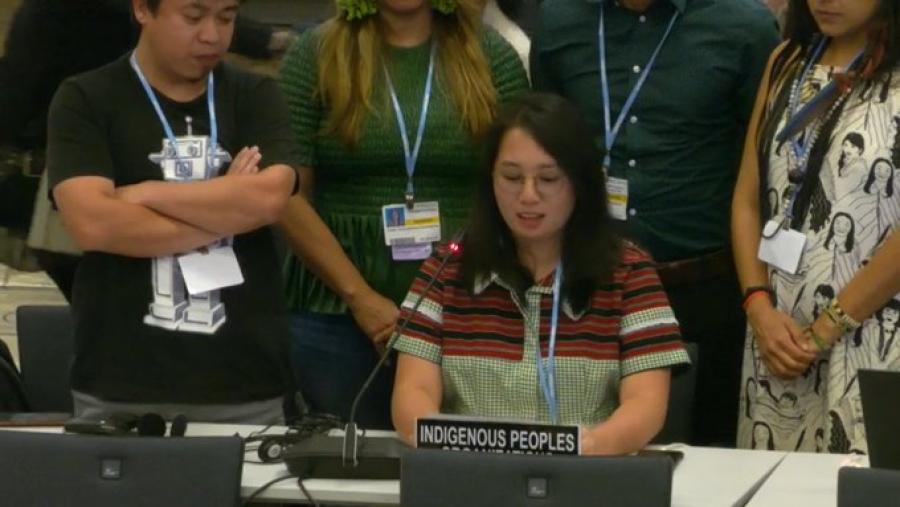
The experience of being Indigenous and Transgender brings about a variety of unique intersectional challenges. Growing up in Tana (Deanu), Sápmi land, Levi Sørum (Sámi) lived most of his life rooted in Sámi culture and language. He says he feels fortunate to have attended Sámi kindergarten and one year of Sámi elementary school, in light of Norway’s history of attempting to erase Sámi culture. Besides being Sámi, Sørum is a Transgender man – although he considers the term Transgender more of a physical description than an identity. “I personally can't say that I identify as one thing or the other. I feel like I'm just me. If you were to ask me about my gender, I am a man. I use he/him pronouns,” Sørum says.
Growing up Sámi, Sørum says that his assigned gender role was not an overt challenge: “I'm a relatively masculine person. I think because of that, I never really had any difficulties with Sámi culture. I was born into the female gender role, but in Sámi culture, even the female gender role is quite masculine compared to Western standards.” Sørum shares that he was raised free of gender roles which contributed to him not feeling the pressure of conforming to any specific role. When discussing the differences between Sámi and Western gender roles, Sørum reflects on how the Sámi expectation of being self-sufficient is directed at both genders. Although there may be a tendency for women to tend more to the home and for men to engage in outdoor tasks, the roles overlap, and both partake in more masculine tasks. The Sámi culture is “very forgiving for women and female people engaging in typically ‘masculine’ activities. In fact, it may even be considered positive,” Sørum explains.
After transitioning in his 20s, Sørum says the biggest challenge has been the fear of not living up to the Sámi male gender role. “While I’m generally masculine by Western standards, I don’t really feel like I’m masculine enough by Sámi standards. That bar is suddenly much higher,” he says. Practicing duodji (Sámi traditional crafts) is an example of a situation where he feels a stigma around his masculinity. Sámi culture distinguishes ‘soft’ duodji (knitting, weaving, leather working) from ‘hard’ duodji (woodwork, working with bones and horns); whereas soft duodji is considered a women’s practice, hard duodji is considered a man’s practice. Sørum engages in both forms, as practicing duodji is an important way for him to express his cultural identity. However, he explains that he is not very open about practicing soft duodji for fear of not being perceived as masculine enough. “I had to claim it [the masculine gender role]. So maybe I feel a bit scared of losing it,” he says.
For Sørum, the biggest issue in Sámi culture as a Transgender man is the lack of representation and visibility. Growing up, he did not have any role models that looked like him. “I didn't know any queer people growing up because everyone kept quiet about it. To this day, I don't know any Sámi Transgender men that are older than me,” Sørum explains. “I didn't really learn about Transgender people until quite late in life. The first time I heard about Transgender people, I think it was maybe early adolescence [and was] mostly Western Trans women and I couldn't relate to that at all. It became something that was far away and didn't really exist in my world. I didn't really know that people like me could be Transgender until early adulthood, actually.”
The lack of visibility of Sámi Transgender people made it difficult for Sørum to figure out his feelings toward his identity. He says he always knew, in a way, that he was Transgender, as his body felt ‘wrong’. However, he didn't know what the disconnect between his mind and body actually meant. Sørum remembers how he was told as a child that his -negative- feelings towards his body would go away if he simply lost weight. Reflecting on the key information that later helped him realize that he is Transgender, Sørum mentions the moment when a former classmate from the Sámi elementary school came out as Transgender in a Facebook post. “I didn't realize it then, but that was important to me in the sense that Transgender people weren't just this mythical creature existing far away, they were in my home, too, so to speak,” Sørum says. Still, the classmate identified as non-binary and appeared more feminine, and Sørum didn’t fully relate to them. Later, more critical pieces fell into place around his early twenties, when Sørum learned about the existence of Transgender men. “I learned it through some TV show or something, I don't remember exactly what, but there were these characters that actually were kind of tomboyish and basically looked like girls in boys' clothing and used he pronouns. But I couldn't exactly relate to them either,” he recalls.
The lack of relatability remained an obstacle for Sørum in coming to terms with feeling the mental strain of having a female body. He describes how, during this time, he turned to Google to understand his feelings. “I remember one of the first searches, the hits were: ‘These are the signs that you might be Transgender.’ And I was like, what is this? I didn't really internalize that. I just kind of brushed it off.” Levi elaborates, noting how the way that we as individuals relate to ourselves is by relating to others. Being unable to relate completely to others made it difficult for him to picture himself as both Sámi and a Transgender man.
Another challenging aspect of growing up Sámi and queer is the relationship between language and identity. Recently, queer-identifying Sámi started a project of translating the Rainbow Dictionary into the three biggest Sámi languages. Having to use a different language, including Norwegian, Finnish, Swedish, and Russian, to express a queer identity contributes to the alienation of being both queer and Sámi. Although Sørum is not involved in said project, he shares his thoughts on the importance of language to express one’s identity. Sørum explains that this is a consequence of State-led policies targeted at erasing Sámi languages – Many Sámi people, including queer-identifying Sámi people, feel as if important aspects of their identity are taken away from them, language being one of them. “I think if we had a queer vocabulary in Sami when I grew up, I wouldn't think of being queer as this Western thing. It would be more a part of my own culture. Using a different language to describe something, makes it more foreign,” he says.
Recalling his own experience of coming out to his dad, Sørum says the Norwegian language, rather than Sámi, was the only tool available to him to express the discrepancy between his feelings and his body. He could only verbalize this transition to his dad via text message, as this is the only context in which they communicate in Norwegian with each other. “That's the only way I knew how to come out to my dad. I kind of wish I could have done it in person, but I don't really know how I would have phrased it because we don't have the vocabulary. I think it's important to get that, to translate those words. I think it's important, not just for me, but for a lot of other people who don't have the words to describe their own identity in their own language,” Sørum explains.
Being an intersection of two small demographics, Sámi and Transgender, community building is an important aspect of fostering relatability. Sørum says that Trondheim Pride in 2019 was the first time he realized that a queer Sámi community exists, although it happened by accident. “Suddenly, while celebrating, I saw all these Sámi people and I was like ‘where have you been all my life’? I realized I had to meet more queer Sámi people. It’s something that I feel the need to do to feel a sense of belonging,” he recalls. Soon after, Sørum joined the queer Sámi volunteer organization, Garmeres, which not only gave him community but showed him how other queer people “are finding ways to express themselves within the Sámi [culture].” Still, Sørum says, “in the Sámi community in general, I often feel like I'm too queer [and] in the queer community, I often feel like I'm too Sámi.”
While no community is a perfect fit, the queer Sámi community is crucial to Sørum, as it provides a safe space for him to be himself, one where he does not feel judged or discriminated against. “When I go out in the world, I wear the mask that is going to make me blend in the most because I don't want to have to deal with anything. I don't really take that off until I get more comfortable with people. Sometimes when I have taken off that mask, I've come to regret it later. There is definitely always this safety calculation going on,” Sørum explains.
International Day of Transgender Visibility is March 31.
Photo by Katja Hansen.



